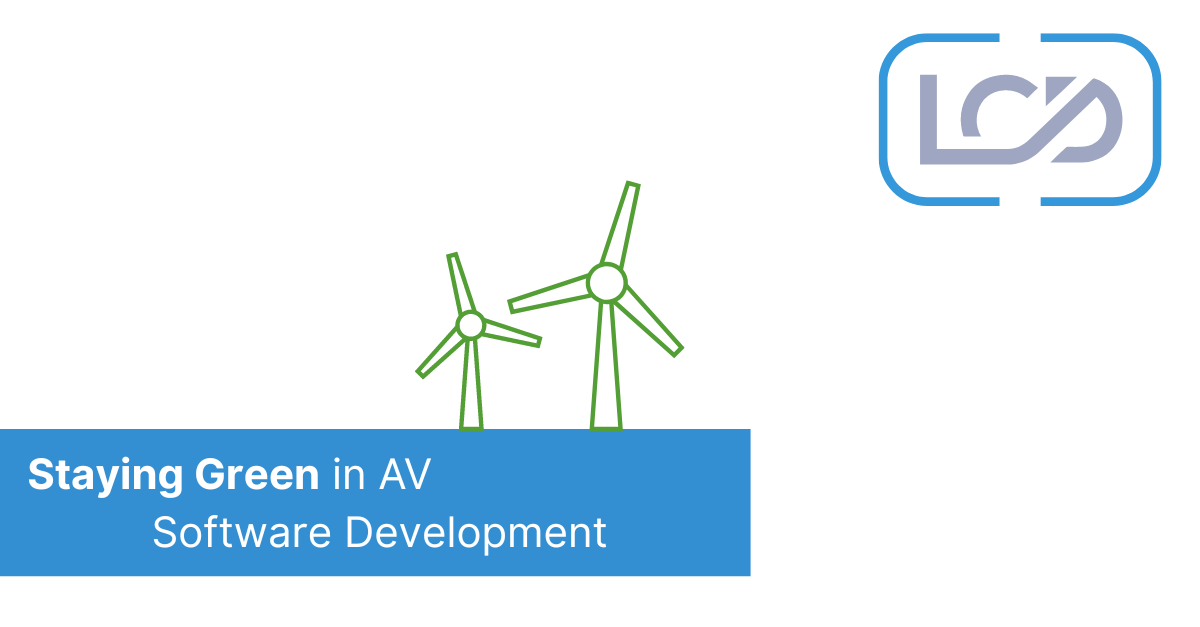Staying Green in AV Software Development
In the past as a programmer in the Audio Visual industry when I thought about the environmental impact of my activities on the earth I would think about my Travel and immediately think of physical hardware like servers and devices.
Post covid the team at LCD rarely travel to sites to deploy code and that part of our impact has largely gone away although we still do travel and are always mindful of minimising the impact.
However, the software we use regularly also has a footprint on the environment. As we usher in the era of AI and our lives move futher online, it’s worth asking: how green is your audio-visual (AV) software development?
As AV software developers, we have earned a seat at the table in efforts to reduce carbon emissions to make the earth a better place to live in.
AV Software Development as an Energy Hog
The bulk of AV software developers rely on data centres to process and store user data. These data centres require copious amounts of energy to run and cool. They are energy guzzlers!
So, how can software development be made greener?
The typical approach is to shift to renewable resources. Ask anyone about what they think a company going green is all about, and they’ll mention solar panels and wind turbines.
Some companies are jumping on the bandwagon by investing in renewable energy projects like solar farms. While this may be a step in the right direction, becoming carbon neutral is more than solar and wind energy.
Perhaps the first step towards greener AV software development is awareness. Code writers play an essential role in determining the energy cost of the software. So, it’s vital to ask, how do coders fit in the grand scheme concerning carbon emissions?
How do you pick the most energy-efficient APIs without affecting performance? For example, choosing the correct API for a file reading with a focus on efficient use of buffer sizes can save as much as 76% compared to a less efficient solution. It all boils down to how much we know about green coding.
There are helpful resources such as Green Coding Berlin and Green Software Foundation developers can use as a starting point to better awareness.
Rooting for green AV software
Possibly the most practical way to make AV software development more environmentally friendly is to design it with sustainability in mind from the outset.
Consider the environmental impact of every functionality and feature during software development. LCD are towards greener software.
Google is leading the way by optimising its cloud infrastructure and data centres to be greener. Google’s goal is to reduce energy usage and carbon emissions.
With AV software development, it should initiate with articulating strategy. Establish targets and boundaries in the AV software development cycle.
Of course, there are obviously some trade-offs to consider between business and environmental objectives. Therefore, establish the limit beyond which the development process cannot cross. For example, does increasing product quality warrant the extra energy demand? This is a higher-level management decision.
How you measure the success of the green AV software development process is part of the strategy. Determine the metrics such as energy savings through dynamic code analysis, Scaphandre, and Kepler. Next, establish a threshold and leave room for flexibility. Green software is a largely unchartered territory and some flexibility comes in handy.
You can then keep reviewing and refining. There’s always room for improvement.
But apart from the software architecture and development, delivery must also be carbon neutral. The intermediary services you use to deliver the complete AV software to the client can support your green software efforts, as well.
We at LCD use Github for DevOps and delivery. Github has achieved net-zero carbon emissions and is working towards 100% carbon-negative operations.
Choosing green cloud and hosting
Of course, not every AV software firm has the resources or expertise to design software with sustainability in mind. But steps can still be taken to reduce the carbon footprint in software development.
For instance, companies can prioritise optimisation, energy-efficient hardware, and cloud services. Keep your development environment clean by deleting any “zombie VMs” and clusters you no longer need. Efficiency begets less energy use.
Indeed, cloud services are vital for developing and deploying modern applications. But these services use data centres that require large amounts of energy.
Some web hosting firms, such as GreenWeb, have gone carbon neutral, and others, such as Flywheel Hosting (who LCD partner with ), are working towards a net-zero goal . While most of the effort by the data centres is in optimising hardware and reducing energy consumption, most of the meat in the bone is in sustainable interventions.
For example, virtual servers can conserve energy while supporting rapid scaling for data centres. AV software development firms can adopt serverless computing to go green. So far, providers such as Microsoft Functions use a pay-as-you-use cost model, which can motivate coders to focus on efficiency.
At LCD we leverage Azure Cloud for some of our SaaS. This allows us to use serverless computing to support our carbon reduction efforts.
Admittedly, staying green in AV software development is not easy. It requires inter-organisational collaboration between developers and their service providers. However, AV software developers must have a strong will to go green and stay green.

Neil Silver
Lead Developer LCD – Crestron Programmer, CSP
Managing the Development and Custom Programming Teams on a day-to-day basis and responsible for Product Design and Project Oversight.


